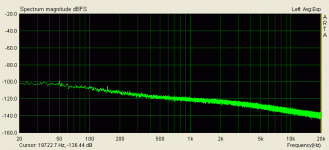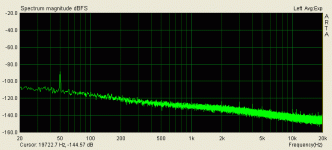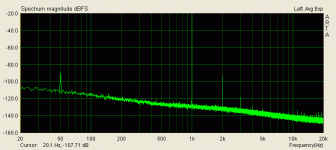Hi Merlin
I am sure it was money well spent !!!
I really apreciate your subjective impressions about different components.... Would you please replace the output caps and let us know the outcome before you go for the interstage ?
Hi RCruz,
Of course, I will let us know Obbligatos 630VDC vs Mundorf Silver Gold Oil , but surely sounds better Mundorfs due that them are very high rated 1200VDC tol. 2%
Last edited:
Salas, I am not glad speaking without compare, I don't compared so I can't afirm nothing good or bad, I'm only supossing it will perform better because always I noticed a cap rated with more voltage sounds good than other rated less voltage film or lytic, seems we speak different language: I can't speak about prices only about perfomance, other theme it's quality ratio price. Mine 1st option was TFTF V-Cap 700$00 each 3.3uF 250VDC, 2nd TFAF Aura Teflon 3uF 200VDC 200$00 each, I purchased with mine head/pocket not with mine hearth/dream.
Last edited:
I guess the obbligato should be comparable with mundorf supreme or a good amphom... but the silver gold is claimed to be on another level.... I am very curious about these comparation !!!
As we are entering one of my favorite themes, what do you think about DUELUND Cast - PIO (Paper In Oil)....
As we are entering one of my favorite themes, what do you think about DUELUND Cast - PIO (Paper In Oil)....
It could be the factory mislabelled or mixed some batches and gave special prices to some vendors?. Don't know, excluding any error during measuring of course. If they are genuine, is not bad that Dual Triode got some strong ones too. DT, can you photo some on macro so we can see the labelling and if it looks genuine? You used the Ameter method with no drop resistor, right? What is the tolerance of those Ameters?
Hello Salas,
In this economy I am working more hours. I will take some macro photos of the guilty GR’s this weekend. The GR’s are mixed for sure, the codes and stencil colors have a range of variation especially the ones over 6.5 ma IDSS.
Yes I did use an ameter , no drop resistor. My approach is experimentation rather than maximum expenditure. The goal was to get sort of close. It looks like there is an interest in a refinement of the process. The meter cost $8 and change. It is a digital 19.9 ma (range) meter that only reads to 0.1 ma or 2% at 5ma. I am not claiming 2% precession. The measurements are repeatable. The weak link to my view is the “9” volt battery. Press and hold the momentary switch the reading peaks and begins to fall. I think that an lm317 regulator set to 10 volts would be an improvement.
The 2SK170GR’s and meter both came from Futurlec.com.
DT
All just for fun!
I guess the obbligato should be comparable with mundorf supreme or a good amphom... but the silver gold is claimed to be on another level.... I am very curious about these comparation !!!
As we are entering one of my favorite themes, what do you think about DUELUND Cast - PIO (Paper In Oil)....
I have wire NEOTECH - Legenburg Rectangular Solid Core Copper, Teflon Jacket (UP-OCC Mono-Crystal design) Hook-up Wire & WOW is other kind of sound: faster than standard teflon, more articulated, tigh & deep bass, mids very focuseds & highs ultra transparents, really not seems copper it's near silver but keeping the warm of copper are really interesting, never will buy silver with this kind of wire. So I suppose the Duelund will be good.
Only & big problem SUPER-EXPENSIVE cap.....
Obbligatos have an excellent ratio quality price.
for comparison your method is OK. just make sure the battery voltage does not sag as you wait for a steady reading.Yes I did use an ameter , no drop resistor. My approach is experimentation rather than maximum expenditure. The goal was to get sort of close. It looks like there is an interest in a refinement of the process. The meter cost $8 and change. It is a digital 19.9 ma (range) meter that only reads to 0.1 ma or 2% at 5ma. I am not claiming 2% precession. The measurements are repeatable. The weak link to my view is the “9” volt battery. Press and hold the momentary switch the reading peaks and begins to fall. I think that an lm317 regulator set to 10 volts would be an improvement.
A regulator set to [10V + voltage drop across the measuring device] would be better.
If you use the same meter at the same setting and at the same room temperature and the same battery voltage, then it's accuracy allows good comparison. It cannot ever give good absolute Idss. None of us poorly resourced amateurs can ever get absolute accuracy. I promote the comparison method repeatedly.
But, I do prefer using a dropping resistor for a voltage to current measurement.
Say you have a 10.25V regulated supply.
Try using a 100r dropping resistor.
Pick out a ~4mA Idss jFET. Measure it. The voltage drop across the dropping resistor will be ~400mV the voltage across the jFET will be ~9.85Vds.
Now pick a 7mA Idss jFET.
Put it in circuit and test it. Vds~9.55V this will give an erroneous comparison to the 4mA device. But, it will compare to other 7mA jFETs.
If all you want is to select Idss jFETs, then any approximate method is good enough.
If you want matched jFETs then the method to ensure good comparison becomes much more complictated.
It could be the factory mislabelled or mixed some batches and gave special prices to some vendors?. Don't know, excluding any error during measuring of course. If they are genuine, is not bad that Dual Triode got some strong ones too. DT, can you photo some on macro so we can see the labelling and if it looks genuine? You used the Ameter method with no drop resistor, right? What is the tolerance of those Ameters?
What does happen is:
Given a normal distribution of some test parameter, the premium grade will be sold at the highest price.
If the process is going very well that week, it may be that there are mostly premium grades, so little left for the lower/cheaper specs!
To fill an order, premium parts may be added to the lower grade bins.
I have done this in the past when test manager at a semi-house.
Economy of survival. Understood.
Now lets see how that equivalent circuit to SGregory I built as an upgrade to a friend recently (only with lower IDSS since the PSU was there already and fixed at lower B+ by Tx) goes along on the FFT, so he can compare his graphs.
First graph is open input, nothing attached except than output. Half the output's cable 2m length was twisted crock clips. It has 410R input resistor on board (820//820). Second graph is just the 15R Zo 1 to 200 attenuator cable attached on input. Its other end not attached to the generator's output. The noise floor is lower now. Ooops, 50Hz hum at -90dB and some very little HF hair also. Not possibly an introduced low level gnd loop, the thing isn't closing with something. Its picking it like an antenna. Could catch 6dB more hum if I touched the cable. Third graph is on the gen with 0.5mV input via the attenuator cable. Not bad THD at all for a non loop NFB SE circuit. I have even seen it losing the 50Hz band completely if playing with the cable and the usb card's placing, but I think its standard it will pick up something when connected to a TT cable so I left it there as charactristic hum. Can go worse when on a TT its the norm. So we see that with closed like low Z MC, nearly grounded input its the real low end noise floor, but we will pick up something little inevitably when exposing to the outside of the grounded box. We can close input to ground inside if we want to see it isolated. But a box in box like SG's can possibly also do better.
Now lets see how that equivalent circuit to SGregory I built as an upgrade to a friend recently (only with lower IDSS since the PSU was there already and fixed at lower B+ by Tx) goes along on the FFT, so he can compare his graphs.
First graph is open input, nothing attached except than output. Half the output's cable 2m length was twisted crock clips. It has 410R input resistor on board (820//820). Second graph is just the 15R Zo 1 to 200 attenuator cable attached on input. Its other end not attached to the generator's output. The noise floor is lower now. Ooops, 50Hz hum at -90dB and some very little HF hair also. Not possibly an introduced low level gnd loop, the thing isn't closing with something. Its picking it like an antenna. Could catch 6dB more hum if I touched the cable. Third graph is on the gen with 0.5mV input via the attenuator cable. Not bad THD at all for a non loop NFB SE circuit. I have even seen it losing the 50Hz band completely if playing with the cable and the usb card's placing, but I think its standard it will pick up something when connected to a TT cable so I left it there as charactristic hum. Can go worse when on a TT its the norm. So we see that with closed like low Z MC, nearly grounded input its the real low end noise floor, but we will pick up something little inevitably when exposing to the outside of the grounded box. We can close input to ground inside if we want to see it isolated. But a box in box like SG's can possibly also do better.
Attachments
In my experience no. Its a matter of transmitting sub mV in a real environment over SE connections. They skip that with balanced line measurements in instrumentation. Having just a consumer computer card, and hooking up here and there in the house with cables running around isn't remotely lab grade either, but I am very happy we got that in this modern age. It can basically show what we need to know.
Now stop a little and think of your vinyl dynamic range. Well covered.
Now stop a little and think of your vinyl dynamic range. Well covered.
Some pics just for fun:
FT-3 vs Mundorfs silver/gold/oil (to have an idea how big they are)
Mundorf alone more near photo
Yes arrived 3,9uF & I have paid 3,3uF
FT-3 vs Mundorfs silver/gold/oil (to have an idea how big they are)
An externally hosted image should be here but it was not working when we last tested it.
Mundorf alone more near photo
An externally hosted image should be here but it was not working when we last tested it.
Yes arrived 3,9uF & I have paid 3,3uF
Looking good.
Regarding magnetic shielding, I have been reading a lot and that resumed to the following:
Some materials are good to shield the origin of the field (strong field)
Some other materials are better suited to shield the receiving unit (small field)
There is always a compromise !
In my case, I found it easyer to iron shield the origin of the field (IEC inlet) than shielding the complete riaa boards with super materials !
Ricardo
Regarding magnetic shielding, I have been reading a lot and that resumed to the following:
Some materials are good to shield the origin of the field (strong field)
Some other materials are better suited to shield the receiving unit (small field)
There is always a compromise !
In my case, I found it easyer to iron shield the origin of the field (IEC inlet) than shielding the complete riaa boards with super materials !
Ricardo
- Home
- Source & Line
- Analogue Source
- Simplistic NJFET RIAA


